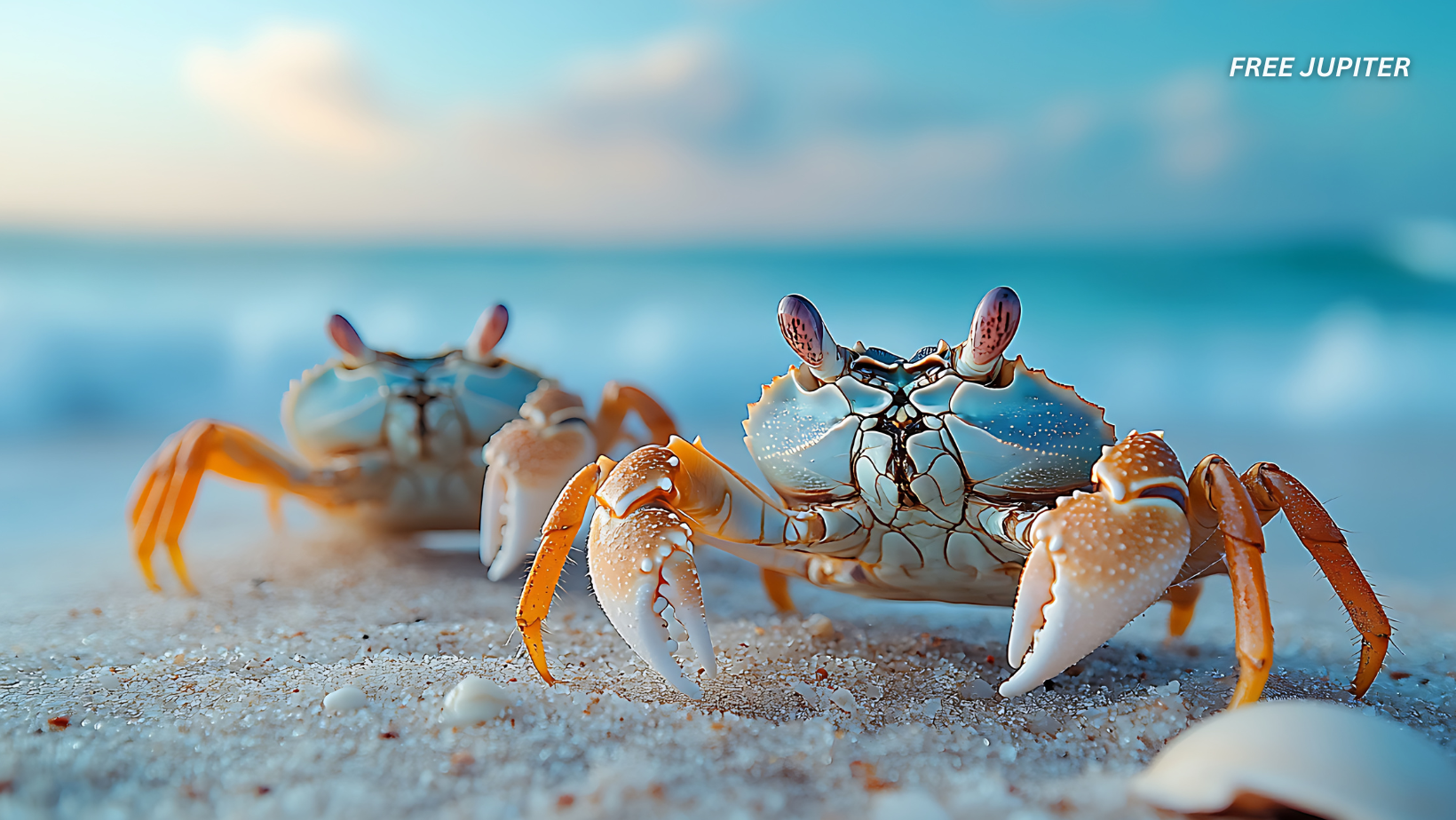Friendly Note: FreeJupiter.com shares general info for curious minds 🌟 Please fact-check all claims—and always check health matters with a professional 💙
For the longest time, crustaceans like crabs, lobsters, and shrimp were thought to be too simple-minded to feel pain. People assumed their reactions were just instinctual twitches—not real suffering. But now, scientists have come forward with compelling evidence that turns this belief on its shell: crabs can feel pain. And that revelation might change the way we catch, cook, and consume seafood.
The Experiment: Testing Crab Perception
Researchers set out to settle the debate by studying shore crabs (Carcinus maenas), a common marine species. They didn’t just watch what crabs did when touched or poked—they actually monitored the crabs’ brain activity using electrodes affixed to their shells.
The experiment involved applying different types of potentially painful stimuli, such as vinegar on soft tissue and mechanical prodding. If the crab’s response was purely reflexive, it would be brief and automatic. But what the scientists saw was something much more intricate.
Depending on the type and intensity of the stimulus, the crabs’ nervous systems responded differently. This showed a level of sensory processing and awareness that goes beyond the simple “poke and twitch” reaction. In other words, these animals don’t just react—they feel.
Read more: How Dolphins Developed the Ability to ‘See’ Underwater with Sound, Explained by Science
The Case of the Lobster: Echoes of an Ethical Dilemma
This isn’t the first time crustacean pain has entered the spotlight. Back in 2018, Switzerland made headlines by banning the boiling of live lobsters. The law required lobsters to be stunned before cooking—either by electrocution or another approved method. The move was based on emerging studies that suggested lobsters, like crabs, may have more sophisticated nervous systems than previously assumed.
Similarly, in the UK, a 2021 review commissioned by the government concluded that decapod crustaceans—including lobsters, crabs, and crayfish—should be recognized as sentient beings under animal welfare laws. This review considered over 300 scientific studies and led to an expansion of the Animal Welfare (Sentience) Bill to include these animals. This was not about anthropomorphizing them but acknowledging credible science that points to their capacity for pain and suffering.
Shrimp, Too? The Forgotten Crustaceans
When conversations about animal welfare in the seafood industry arise, lobsters and crabs tend to steal the spotlight. Their size, prominent claws, and the spectacle of being boiled alive often evoke stronger reactions. But lurking quietly in the background is another group of crustaceans that’s often overlooked—shrimp.
Despite being one of the most widely consumed seafoods globally, shrimp receive remarkably little attention when it comes to ethical treatment. Yet emerging research suggests that they, too, may be capable of experiencing pain and distress. And unlike their larger cousins, shrimp often endure mass suffering on a scale that’s industrial, invisible, and largely unregulated.
What Makes Shrimp Easy to Ignore?
Shrimp are small, silent, and seemingly expressionless. With no obvious facial features or sounds, they don’t communicate discomfort in ways that trigger human empathy. Plus, their sheer volume on our plates makes it easy to forget that each shrimp is an individual organism, not just part of a faceless pile.
Globally, billions of shrimp are harvested each year—many through methods that would likely be deemed inhumane if applied to land animals. Industrial shrimp farms are notorious for overcrowding, poor water quality, and the use of harmful chemicals. Wild-caught shrimp often suffer in trawl nets, where they may be crushed or slowly asphyxiated before being sorted.
Read more: Scientists Successfully Create Healthy Fertile Mice Using Two Male Parents
What Does Science Say About Shrimp Pain?
While fewer studies have been conducted on shrimp compared to crabs or lobsters, there is growing evidence that shrimp exhibit behavioral and physiological responses to harmful stimuli. In lab settings, shrimp have shown signs of stress when exposed to unpleasant conditions, such as electric shocks or chemical irritants. Some experiments observed that shrimp would avoid areas associated with those experiences—a possible sign of learning and memory, both of which are often tied to pain awareness.
Moreover, shrimp possess a decentralized but functional nervous system that includes sensory neurons, ganglia (clusters of nerve cells), and even opioid receptors—similar to those found in animals known to feel pain. These structures suggest that shrimp have the biological tools necessary to detect and react to injury.
How This Changes the Seafood Landscape
If crustaceans truly experience pain, then popular preparation methods like boiling, cutting them open while alive, or freezing them to death could be causing real suffering. These practices were largely justified by the belief that such animals couldn’t feel pain the way mammals do. That belief is crumbling.
Researchers behind the new crab study published in Biology are advocating for better practices in both commercial and home kitchens. Stunning devices, like crustastun machines, already exist for lobsters and crabs, and they render the animal insensible before cooking. However, they’re not commonly used outside high-end restaurants or research labs.
Ethical Consumption: What Can You Do?
For the average seafood lover, this new science may prompt an uncomfortable question: is it possible to enjoy seafood ethically?
Some suggestions include:
- Choosing restaurants that practice humane killing methods for crustaceans.
- Asking where and how seafood was sourced, particularly for shellfish.
- Exploring plant-based seafood alternatives, which are gaining traction.
- Supporting regulations and labeling laws that encourage humane treatment.
This doesn’t mean everyone has to swear off crab cakes forever, but it does suggest that consumers can nudge the industry toward more ethical standards—one plate at a time.
Final Thoughts: A Call to See Beyond the Shell
The confirmation that crabs—and likely their crustacean cousins like shrimp and lobsters—experience pain is more than just an interesting scientific discovery. It’s a quiet but powerful shift in how we view life beneath the surface of the sea. For decades, the seafood industry and society at large have operated under the assumption that creatures without expressive faces or vocal cords couldn’t possibly suffer. But science is challenging that narrative, and with it, our moral comfort zones.
We’re now entering a time when the ethical conversation about food is expanding. It’s no longer limited to land animals like chickens, cows, or pigs. It now includes the silent, shelled beings of the ocean—creatures that, until recently, we considered little more than instinct-driven automatons. But they are not. Evidence is steadily building that these animals can feel, learn, and even avoid pain—qualities we once reserved for more familiar creatures.
This isn’t about vilifying seafood lovers or calling for an end to all crustacean consumption. Rather, it’s about awareness—recognizing that the choices we make have ripple effects beyond what’s on our plates. It’s about moving from ignorance to informed compassion.










